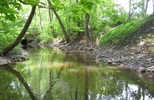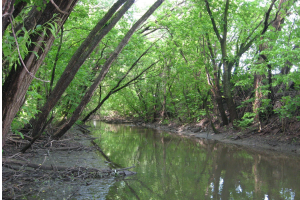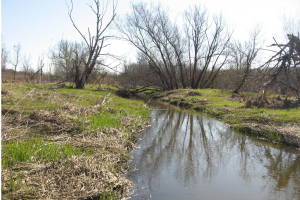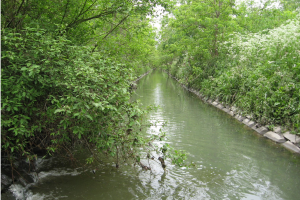.png)
The urban streams project began in 2013. The goal was to assess urbanization impacts on streams and their ecological communities. We wanted to learn more about stream ecosystems as they are relatively unknown to the scientific community, decision-makers and residents. To do so, we collaborated with Beatrix Beisner from Université du Québec à Montréal (UQÀM) and the Ministry of Forests, Wildlife and Parks. Nine undergraduate and graduate students worked to increase our understanding of ecological dynamics in Laval’s urban streams.
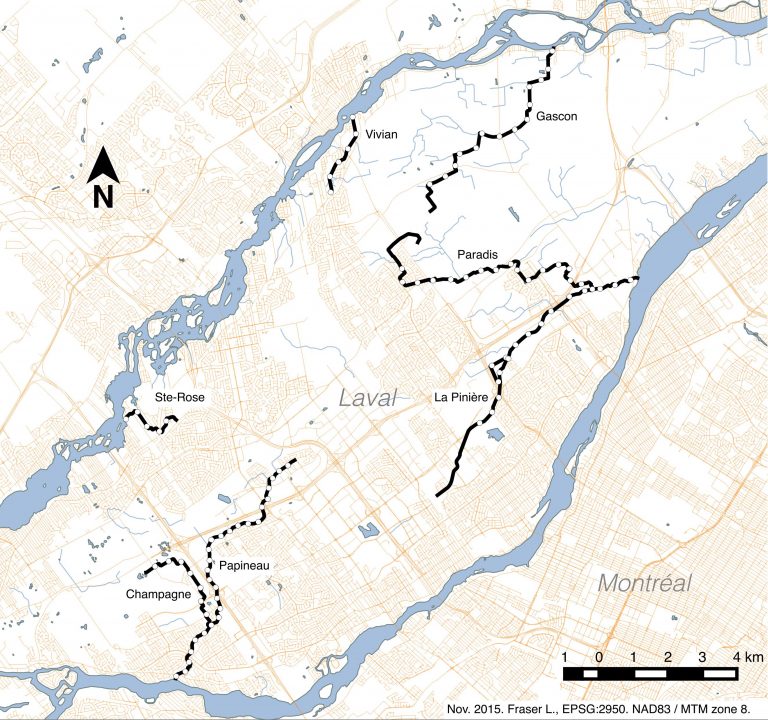
CRE de Laval and the City of Laval identified 14 main urban streams across the island. Through this project, we were able to characterize 7 of them, for a total of 42 km.
Characterization
Between 2013 and 2015, a broad study on stream dynamics was conducted. Seven of the fourteen main streams were assessed and surveyed : Papineau-Lavoie (2013; 2014); Champagne (2014); Gascon (2014); la Pinière (2014); Sainte-Rose (2015); Vivian (2015); and Paradis (2015).
A methodology was also developed in order to assess stream health by using physical, chemical and biological indicators.
.png)
For each surveyed stream, the sampling stations were 500 meters apart. In each station, all the parameters mentioned above were measured. With the help and expertise of professor Beisner’s lab and the Ministry of Forests, Wildlife and Parcs, our organization successfully assessed fluvial habitat, water quality and the biodiversity of these streams. The data was analyzed afterwards and detailed reports were published, issuing salient facts and recommendations to improve the habitat quality of these riparian ecosystems.
Through this collaborative project, CRE de Laval demonstrated the importance of urban streams to improve sustainability and defended their relevance for land-use planning in order to restore and enhance these fragile habitats.
Surveyed streams
This project demonstrated that Laval streams display the expected tendencies of urban streams, compared to more natural streams. Most problems occur due to excessive mineralization of surfaces for infrastructure construction. Sewage disposal, artificial channeling, watercourse modification, hydrogeographical fragmentation, habitat homogeneity are all redundant problems that affect urban stream ecology and strongly impact local biodiversity. Natural fluvial dynamics create habitat diversity while the reshaping of water courses to accommodate urban planning homogenizes these fluvial habitats by favoring the establishment of tolerant and even invasive species instead of native species adapted to more specific ecological niches.
Nonetheless, in many Laval streams, we found rich habitats that were home to plant and fish species with special conservation statuses, and even some fish prized for recreational fishing even though anthropic pressures were noted in these riparian ecosystems.
Papineau-
Champagne was surveyed in 2014 with Gascon, La Pinière and Papineau-Lavoie. The report is available on the page.
Gascon was surveyed in 2014 with Champagne, La Pinière and Papineau-Lavoie. The report is available on the page.
La Pinière was surveyed in 2014 with Champagne, Gascon and Papineau-Lavoie. The report is available on the page.
.jpg) Sainte-Rose stream
Sainte-Rose stream
Sainte-
.jpg) Vivian stream
Vivian stream
Vivian was surveyed in 2015 with Sainte-Rose and Paradis.
Stakeholders
Many technical and financial stakeholders were involved in this project:
.png)
To learn more
To learn more, you may consult UQAM’s web page on research projects, under the Urban streams project (in French).
Publications
Conferences
March 17th, 2016 - Spring meeting of agroenvironmental actors of Lanaudière-Laval (MAPAQ): Urban streams project in agricultural areas (in French)
Press reviews (in French)
March 7th, 2016 - Article in Courrier Laval –
February 17, 2016 –
March 17, 2015 –
July 2014 –
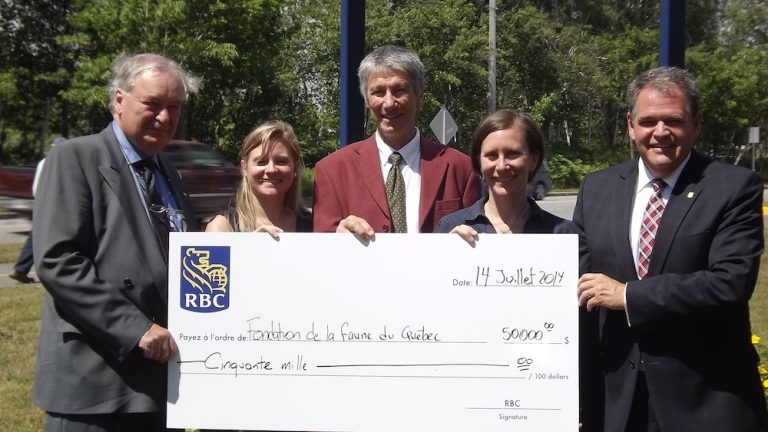
Partners and acknowledgements
![]()
.png)
Acknowledgments
CRE de Laval wishes to thank all partners that made this project possible. First of all, the Ministry of Natural Resources and Wildlife for the loan of equipment and for the key resource persons for the sampling and identification of fish. We also thank the Groupe de recherche interuniversitaire en limnologie (UQÀM) for its great collaboration in the sampling and identification process in laboratory of benthic macroinvertebrates, for the loan of equipment to evaluate physico-chemical characteristics of water and the fecal coliform concentration in water samples, as well as for the expertise of the research group in this field.


